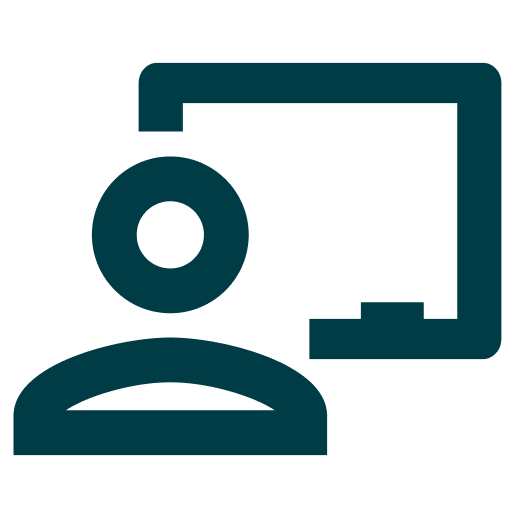The anatomy course at Indiana State’s College of Health and Human Services caters to students pursuing a variety of degrees, including Physical Therapy, Occupational Therapy, and Athletic Training. When the college opened additional course sections to meet growing demand, instructors were teaching multiple sections and grading hundreds of paper-based exams. In 2015, the anatomy faculty adopted Examplify for iPad and soon began to reap the benefits of digital assessment.
Background
Indiana State University was founded in 1865 as the Indiana State Normal School in Terre Haute, specializing in the education of elementary and high school teachers. In 1965, the Normal School was renamed Indiana State University in recognition of its continued growth and has since expanded to include seven colleges with 175 graduate and undergraduate programs.
The College of Health and Human Services at Indiana State University offers 36 degrees across its four departments, including the Department of Applied Medicine and Rehabilitation. The undergraduate program in this department is interprofessional in nature, with students on different degree paths learning side-by-side in shared prerequisite courses.
The anatomy lab course offered through the Department of Applied Medicine and Rehabilitation covers anatomical structures from all human body systems, but emphasizes the musculoskeletal system. The lab course is offered in multiple sections and geared toward students who plan to pursue graduate degrees in Physical Therapy (PT), Occupational Therapy (OT), Athletic Training (AT), or Physician Assistant Studies (PA).
Challenge
In the 2013-2014 academic year, demand for the musculoskeletal anatomy course in the College of Health and Human Services was at an all-time high. The Department of Applied Medicine and Rehabilitation offered over a dozen sections of the lab to accommodate a growing number of PT- and OT-track students, AT majors, and nursing students.
As the number of lab sections grew, so did the number of exams to grade, which presented a problem; course instructors were still administering assessments via paper and pencil. With multiple sections that each comprised 25 students and up to 100 items per exam, the grading workload had become unmanageable.
Heather M. Adams, Instructor at the Department of Applied Medicine and Rehabilitation, has been teaching anatomy courses at Indiana State since 2012. In her first semester, Heather recalls teaching multiple lab sections a day and devoting any spare time to grading. With around 100 exams to review in a single batch, it was difficult for Heather to provide individual students with meaningful feedback or keep track of commonly missed questions.
To meet the demands of increased enrollment in these anatomy labs, faculty knew that a transition to digital assessment was the way forward. But not just any computer-based solution would do. Assessments in these lab courses are delivered in a series of stations with marked anatomical models, and students rotate through these stations answering questions that correspond to the numbers on each model.
The experiential aspect of these exams would require that students use portable devices like tablets, since laptops would be cumbersome to carry from station to station. And as faculty were no strangers to unreliable WiFi connectivity on campus, the assessment solution they chose would also need offline options to prevent interruptions during exam sessions.
Adoption & Start Up
Department faculty applied for a grant to purchase a set of iPads and narrowed their search to exam solutions that offered an easy-to-use application for tablet devices. Examplify for iPad checked all the boxes, and in late 2015, the department made the decision to adopt ExamSoft for assessment in its anatomy lab course.
With several years of experience as an anatomy lab section instructor, Heather was responsible for managing the initial upload of exam items into ExamSoft’s faculty portal. With the help of a graduate assistant, Heather created a foundational item bank that section instructors could use to create exams within the portal. Since anatomy lab exams center on the identification of anatomical models, instructors would be able to reuse most of these items from exam to exam.
Anatomy instructors decided on a fill-in-the-blank format for exam items, which would allow them to assess students’ ability to provide the correct names and spellings of anatomical parts. Instructors activated exam features that would best fit the format of these station-based, mark-the-model assessments. For instance, instructors enabled forward and backward navigation to allow students to quickly revisit any stations before submitting an exam.
To prevent any exam interruptions due to unstable WiFi connectivity, instructors activated Examplify’s offline assessment mode. A reliable connection is not necessary for exams delivered in the offline mode; students only need internet access to download the exam and upload the exam file once the exam session is complete. To further combat academic dishonesty, Examplify uses complete device control in the offline mode. This ensures that students cannot access any other programs on the device while the exam file is open.
One thing we like about ExamSoft is that it has a very intuitive iPad application.*
– Heather M. Adams, Instructor, Department of Applied Medicine and Rehabilitation
Results
Switching to ExamSoft for digital assessment has allowed instructors to grade more fairly and efficiently, provide more comprehensive feedback to individual students, and identify areas of the curriculum where their sections may be struggling.
Anatomy instructors have saved substantial time grading — especially those who teach multiple lab sections in a semester — by reviewing student answers for several exams at once. The ExamSoft portal compiles answers from multiple instances of an exam, creates a list of answers for each fill-in-the-blank question, and arranges these answers from most common to least common.
These answer lists make it easy for instructors to decide how much variability in spelling they want to allow for a given question and automatically select the answers they want to accept across every exam. The names of students who submitted each answer are completely hidden from instructors, which helps to ensure equity in the grading process.
Once instructors have finished grading, they can send Strength & Opportunities Reports to each student. The ExamSoft portal allows faculty to choose how much exam content they want to include in these reports, so students can see the questions they missed without revealing the answers to every exam item.
Heather uses item tagging in her anatomy courses to help inform her teaching methods and identify areas of the curriculum where students may need added support. Heather tags each question to musculoskeletal categories (e.g., “upper limb vessels”) so that she can observe section-wide performance by these categories. If a large number of students provide incorrect answers to items in a particular category, Heather will cover this subject area again in her classes.
Moving Forward
As the demand for the anatomy lab course began to grow, faculty at Indiana State made it their mission to find and implement a digital solution that could streamline their unique assessment process. In the six years since, they have been successful in their efforts with the help of ExamSoft’s flexible assessment platform.
When the Spring 2020 pivot to remote learning forced the anatomy lab course online, faculty and students couldn’t continue with a station-based, mark-the-model assessment format, but were able to maintain their database through an ExamSoft grant program. The lab course has returned to a hybrid learning model as of Spring 2021, but there are too many students in a single exam session to safely deliver assessments on campus.
Instructors are eagerly awaiting the safe return of in-class assessment and look forward to diving back into Examplify for iPad. It is the ingenuity and dedication of Heather Adams and her fellow instructors who ensured the seamless transition to digital assessment in the anatomy lab course. Now that they have discovered a solution that works, there’s no turning back.
*This organization received consideration for participating in this Case Study.







